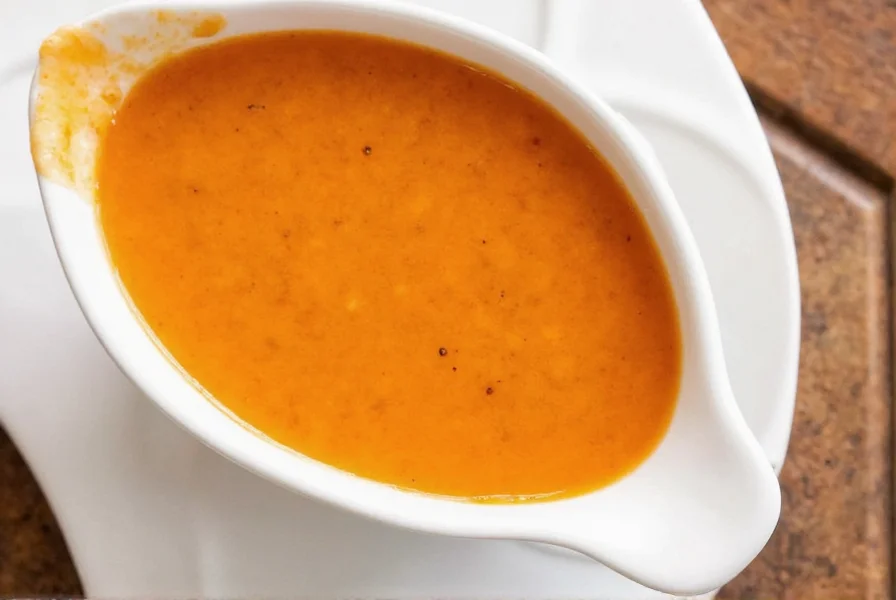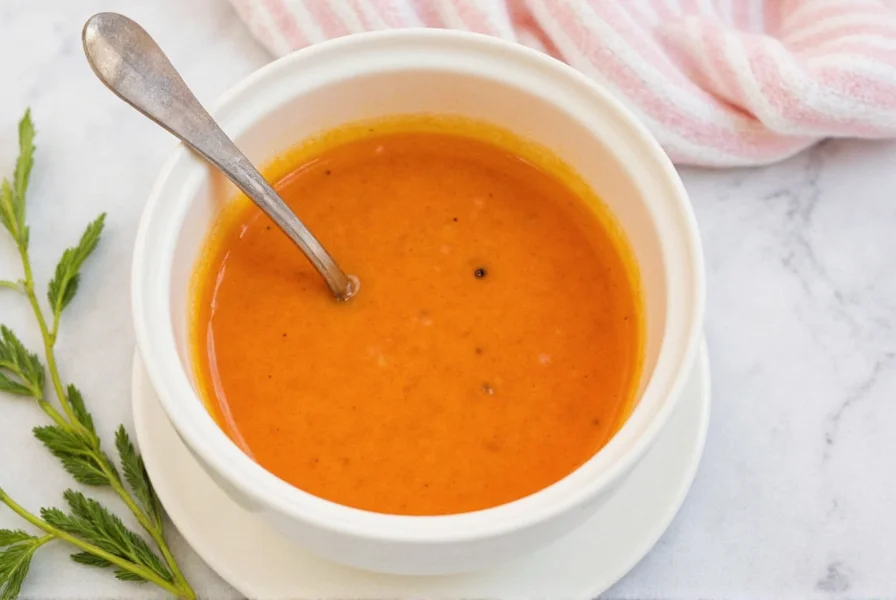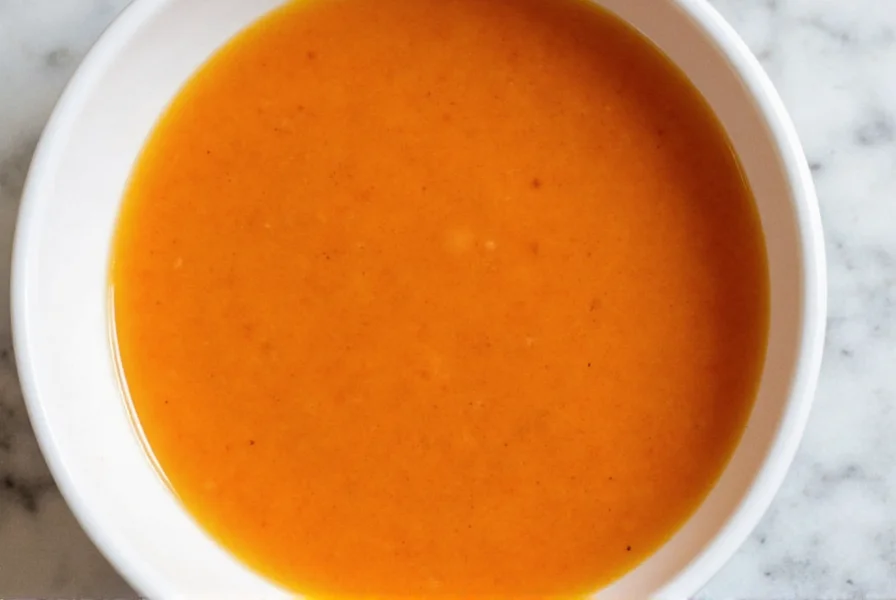Originating from Japan's tradition of aojiru (green vegetable juice) and goma-ae (sesame dressing), this carrot ginger variation represents modern Japanese culinary innovation that maintains traditional flavor principles. Unlike Western dressings heavy on dairy or sugar, Japanese carrot ginger dressing emphasizes natural ingredients and umami balance.
The Cultural Significance of Japanese Dressings
Japanese cuisine values umami (savory taste), aji (flavor balance), and mottainai (zero waste) principles. Carrot ginger dressing exemplifies these concepts by transforming simple ingredients into complex flavors while utilizing the entire vegetable (including peels for added nutrition).
Historically, Japanese dressings evolved from sudachi and yuzu citrus-based preparations during the Edo period. The incorporation of carrot reflects post-Meiji era Western influences, while ginger maintains traditional Japanese medicinal food practices.
Essential Ingredients for Authentic Japanese Carrot Ginger Dressing
The magic of this dressing lies in ingredient quality and precise ratios. Here's what makes each component essential:
| Ingredient | Function | Substitution Options |
|---|---|---|
| Fresh carrot (1 medium) | Natural sweetness, vibrant color, vitamin A | Pumpkin (less sweet) or sweet potato (thicker texture) |
| Fresh ginger (1" piece) | Spicy warmth, digestive aid, anti-inflammatory properties | Ginger powder (1/4 tsp, less vibrant) |
| Rice vinegar (3 tbsp) | Gentle acidity, traditional Japanese base | Apple cider vinegar (slightly fruitier) |
| Soy sauce (2 tbsp) | Umami depth, saltiness | Coconut aminos (soy-free option) |
| Sesame oil (1 tbsp) | Nutty aroma, traditional finishing oil | Avocado oil (neutral flavor) |
Step-by-Step Japanese Carrot Ginger Dressing Recipe
Follow these precise steps for authentic results. Total preparation time: 15 minutes.
- Prepare ingredients: Peel and coarsely grate one medium carrot (about 1 cup). Peel and finely mince 1" piece of fresh ginger.
- Blend base: In a blender, combine grated carrot, minced ginger, 3 tbsp rice vinegar, 2 tbsp soy sauce, 1 tbsp sesame oil, 1 tbsp mirin, and 1 tsp honey.
- Emulsify: Blend on high for 60-90 seconds until completely smooth. For thinner consistency, add 1-2 tbsp water.
- Season: Taste and adjust with additional honey for sweetness or rice vinegar for acidity.
- Rest: Transfer to a glass jar and refrigerate for at least 1 hour before serving to allow flavors to meld.

Variations for Different Dietary Needs
This versatile dressing adapts well to various preferences while maintaining authentic Japanese flavor principles:
- Vegan version: Ensure mirin is labeled vegan (some contain honey) or substitute with additional rice vinegar and maple syrup
- Low-sodium option: Use reduced-sodium soy sauce and increase rice vinegar by 1 tbsp
- Spicy variation: Add 1/4 tsp shichimi togarashi (Japanese seven-spice) or a few drops of rayu (chili oil)
- Creamy adaptation: Blend in 2 tbsp silken tofu for a thicker, creamier texture without dairy
Perfect Pairings: How to Use Japanese Carrot Ginger Dressing
This dressing shines beyond basic salads. Traditional Japanese pairings include:
- Hijiki salad: Toss with cooked hijiki seaweed, shredded carrots, and edamame
- Grain bowls: Drizzle over brown rice, roasted vegetables, and grilled tofu
- Marinade: Use for chicken or fish before grilling (allow 30 minutes marinating time)
- Dipping sauce: Serve with gyoza or vegetable tempura
- Noodle dressing: Toss with cold soba noodles and cucumber ribbons
Storage Guidelines for Homemade Dressing
Proper storage maintains both safety and flavor integrity:
- Store in airtight glass container in refrigerator
- Shelf life: 5-7 days (the fresh carrot content limits longevity)
- Separation is natural—shake well before each use
- Do not freeze (alters texture of fresh ingredients)
- Discard if mold appears or aroma becomes sour

Why Homemade Japanese Dressing Outperforms Store-Bought
Commercial dressings often contain preservatives, artificial colors, and excessive sugar that compromise authentic flavor. Homemade Japanese carrot ginger dressing delivers:
- Pure, vibrant flavor from fresh ingredients
- Control over ingredient quality and ratios
- No artificial preservatives or stabilizers
- Higher nutritional value from raw vegetables
- Customization for personal taste preferences
The slight effort of preparation yields dramatically superior results compared to mass-produced alternatives, staying true to Japanese culinary philosophy of respecting ingredients in their purest form.
Frequently Asked Questions
Can I make Japanese carrot ginger dressing without a blender?
Yes, you can make Japanese carrot ginger dressing without a blender by using a fine grater for the carrot and ginger, then whisking vigorously with other ingredients. The texture will be slightly more fibrous but still delicious. For smoother results, let the mixture sit for 30 minutes to soften the vegetable fibers before using.
What's the difference between Japanese carrot ginger dressing and regular ginger dressing?
Japanese carrot ginger dressing specifically features carrot as a primary ingredient, providing natural sweetness and vibrant color, while traditional ginger dressings focus primarily on ginger flavor. Authentic Japanese versions use rice vinegar rather than citrus, incorporate subtle umami from soy sauce, and maintain a balanced sweet-savory profile without dairy or mayonnaise common in Western ginger dressings.
How can I adjust the sweetness in Japanese carrot ginger dressing?
To adjust sweetness in Japanese carrot ginger dressing, modify the mirin or honey content. For less sweetness, reduce mirin to 1/2 tbsp and increase rice vinegar by 1 tbsp. For more sweetness, add 1/2-1 tsp additional honey or mirin. Remember that carrots' natural sweetness varies by season—winter carrots are sweeter, requiring less added sweetener.
Is Japanese carrot ginger dressing healthy?
Yes, authentic Japanese carrot ginger dressing is healthy when made with fresh ingredients and balanced ratios. It contains no dairy, minimal added sugar, and provides vitamins from fresh carrot and ginger. The dressing delivers antioxidants, anti-inflammatory compounds from ginger, and vitamin A from carrots. Compared to creamy Western dressings, it's significantly lower in calories and fat while offering more nutritional benefits.
Can I use this dressing as a marinade for proteins?
Yes, Japanese carrot ginger dressing works excellently as a marinade for chicken, fish, or tofu. The acidity from rice vinegar helps tenderize proteins while the ginger adds flavor complexity. Marinate for 30-60 minutes (not longer, as the acidity can start to 'cook' the proteins). For best results, reserve some dressing before adding to raw proteins to use as a finishing sauce.











 浙公网安备
33010002000092号
浙公网安备
33010002000092号 浙B2-20120091-4
浙B2-20120091-4